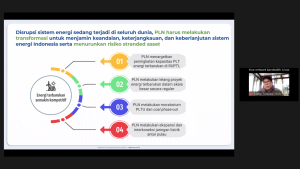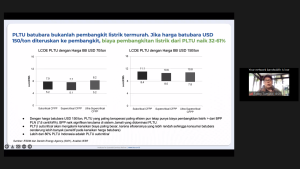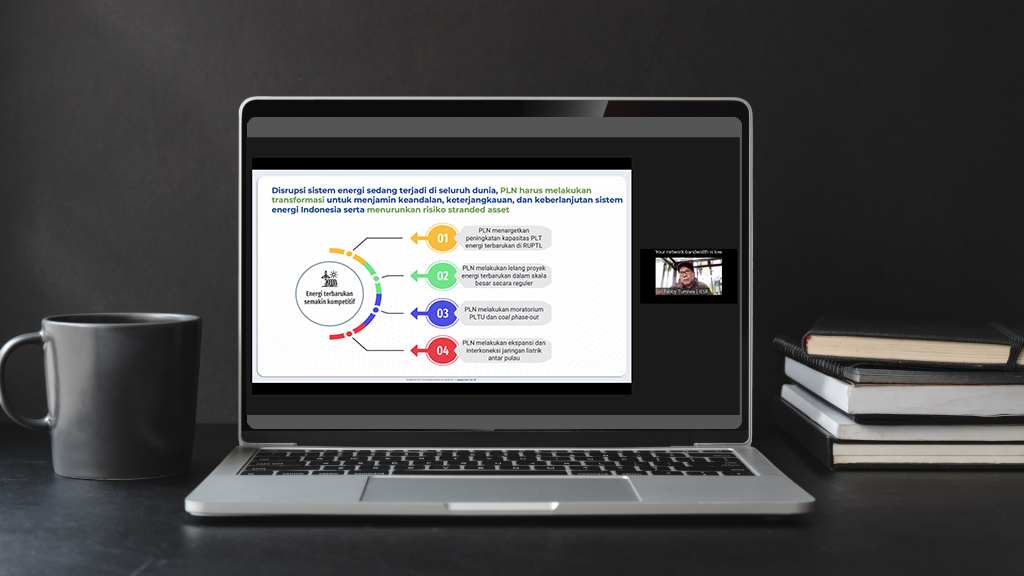Kendari, 7 February 2022 – The world is facing major changes in response to the increase in the earth’s temperature which has increased by 1.1 degrees Celsius since the pre-industrial era. Various global commitments have been agreed to limit the increase in the earth’s temperature to no more than 2 degrees Celsius by the middle of this century. The rise of the global temperature is caused by carbon emissions produced by burning fossil fuels, one of which is in the energy sector.
Indonesia is committed to reducing its emissions by 29% with its own efforts and 41% with foreign assistance, and achieving net-zero emissions by 2060 or sooner.
Dr. Kuntoro Mangkusubroto, senior energy observer, during the “Seminar Pertambangan” – mining seminar, celebrating Indonesia’s National Press Day, said that the energy sector plays a crucial role in reducing greenhouse gas emissions.
“But keep in mind, it doesn’t mean that the net-zero emission issue will only become a burden for PLN because it is related to energy issues. It needs collaboration from various parties to ensure that the 2060 target is achieved,” he concluded, ending his keynote speech.

PLN has a big role in creating a market for renewable energy. To achieve the target of renewable energy, the involvement of the private sector is needed. Therefore, policies and a conducive investment climate need to be orchestrated.
Dadan Kusdiana, Director General of EBTKE at the Ministry of Energy and Mineral Resources said that Indonesia is still aligned and on track to meet the international agreement commitments, but there are options for various accelerations.
“We have compiled a national roadmap to achieve net-zero emissions by 2060, and we keep looking for possible options to accelerate existing targets,” he stressed.
Specifically from the electricity sector, Evy Haryadi, Director of Corporate Planning at PLN, stated that his party was currently in a dilemma. On one hand, currently available power plants at affordable prices are fossil generators (coal power) that produce high emissions, replacing them with renewable energy plants requires a huge investment.
“We see a declining trend in electricity prices from renewable energy such as solar and wind currently ranging from 18-21 cents per kWh, compared to coal (6-8 cents/kWh) for now electricity from renewable energy is still more expensive.”
Fabby Tumiwa, Executive Director of the Institute for Essential Services Reform (IESR), reminded that PLN needs to be careful in looking at investment trends in the electricity sector. The commercial and industrial sectors make clean energy the main need and prerequisite for investing in a country.
“Coal-fired power plants are not the cheapest power plants. Government subsidies through the DMO (Domestic Market Obligation) scheme keep coal prices at USD 70/ton, making the price of electricity from PLTU look cheap. Even though the price of coal in the market currently reaches USD 150/ton,” he explained.
Fabby continued, if the coal price of USD 150/ton is transferred to PLTU, the cost of electricity generation will increase by 32% – 61%.

Energy system disruption is happening all over the world. To ensure the reliability, affordability and sustainability of Indonesia’s energy system, PLN must carry out a transformation. This transformation will also reduce the risk of stranded assets for PLN and IPP (Independent Power Producer). As technology develops, it is estimated that in the next few years the cost of installing solar PV and batteries will be cheaper than the operating costs of a coal-fired power plant.
To achieve the common goal of achieving net-zero emissions by 2060 or sooner, increasing the capacity of renewable energy must be carried out. The currently operating coal power plant needs to be managed wisely and gradually reduced. The Indonesian government’s plan to phase down 9.2 GW of coal-fired power plants through the Energy Transition Mechanism scheme is the right step, but the government has the opportunity to take more aggressive steps.

